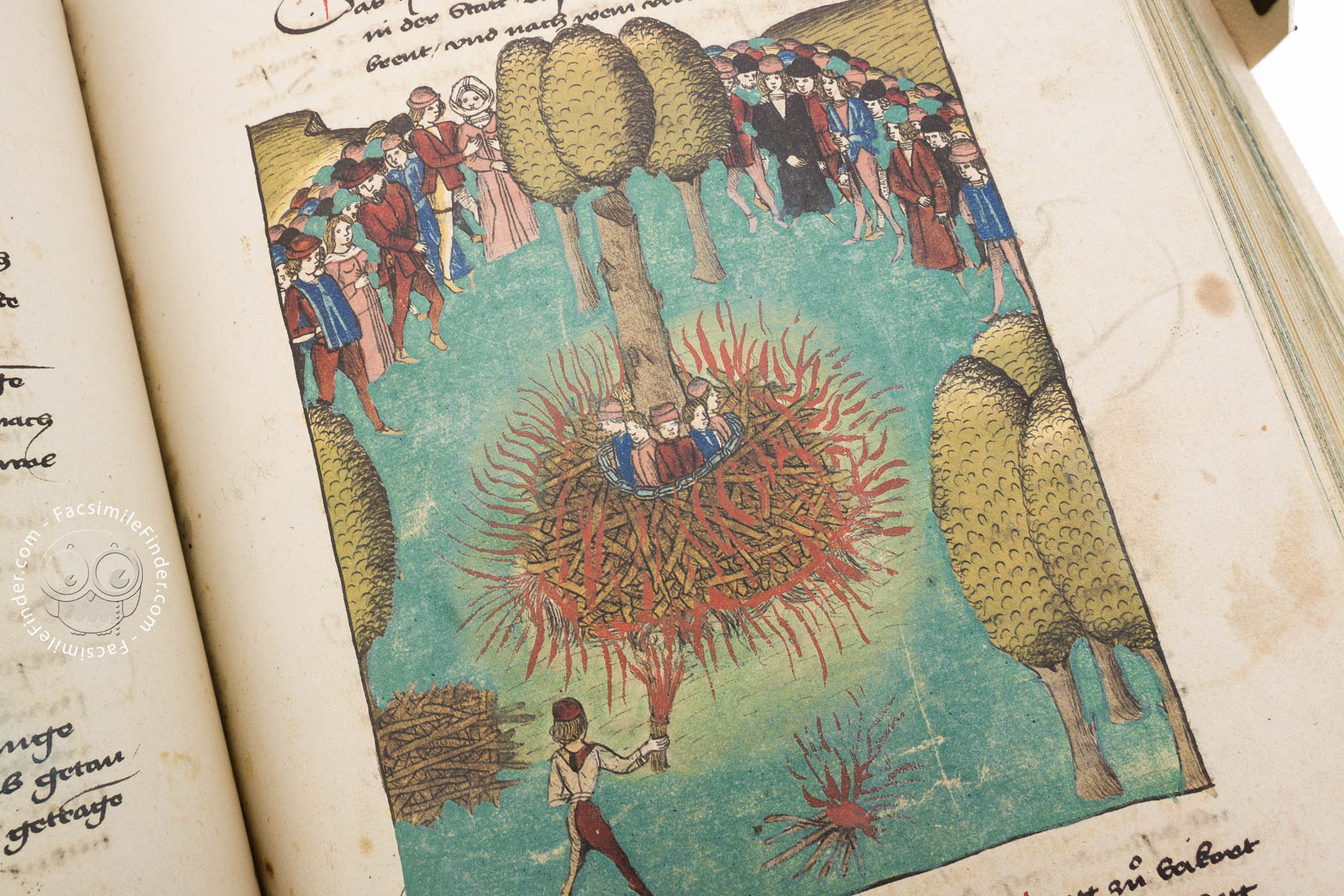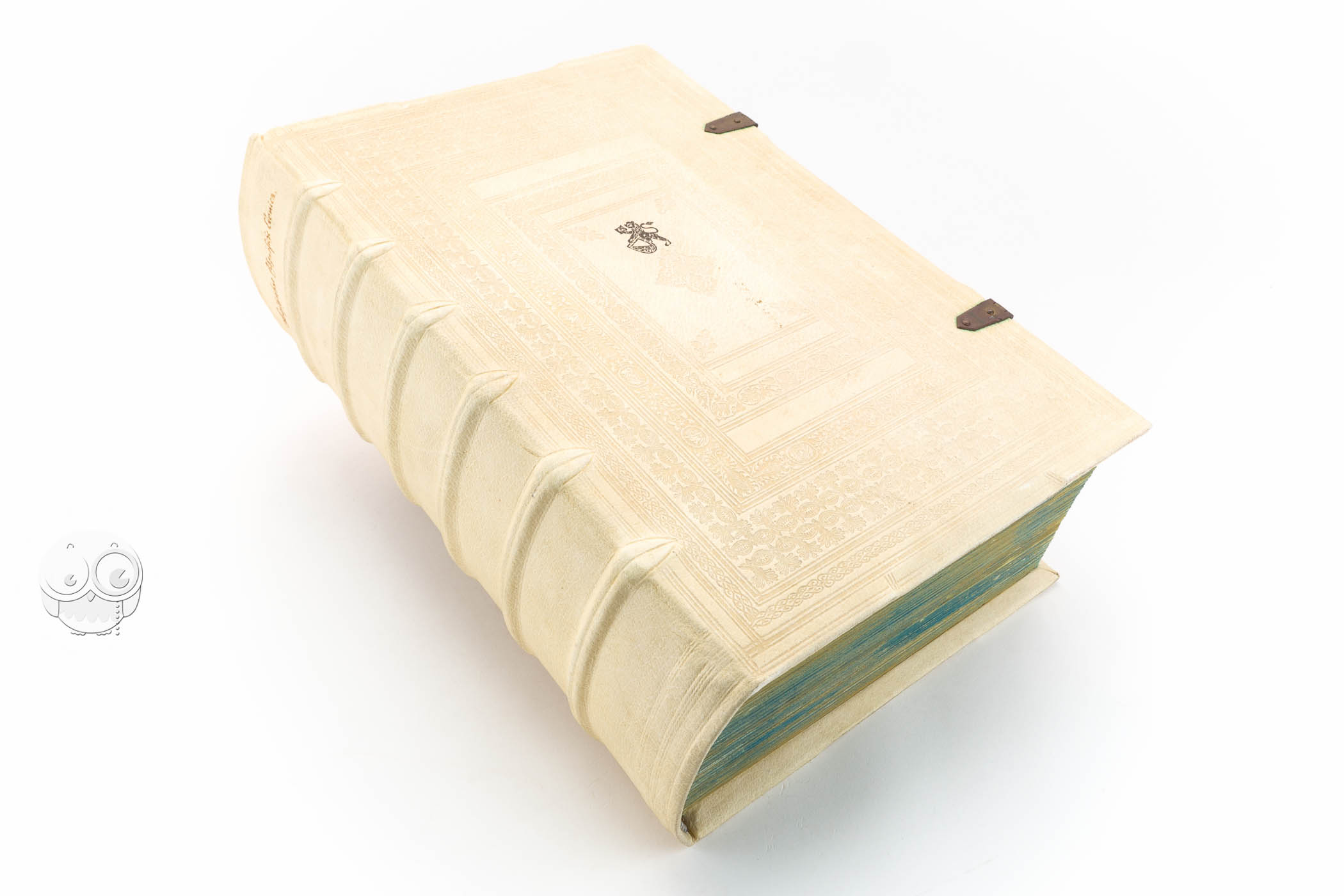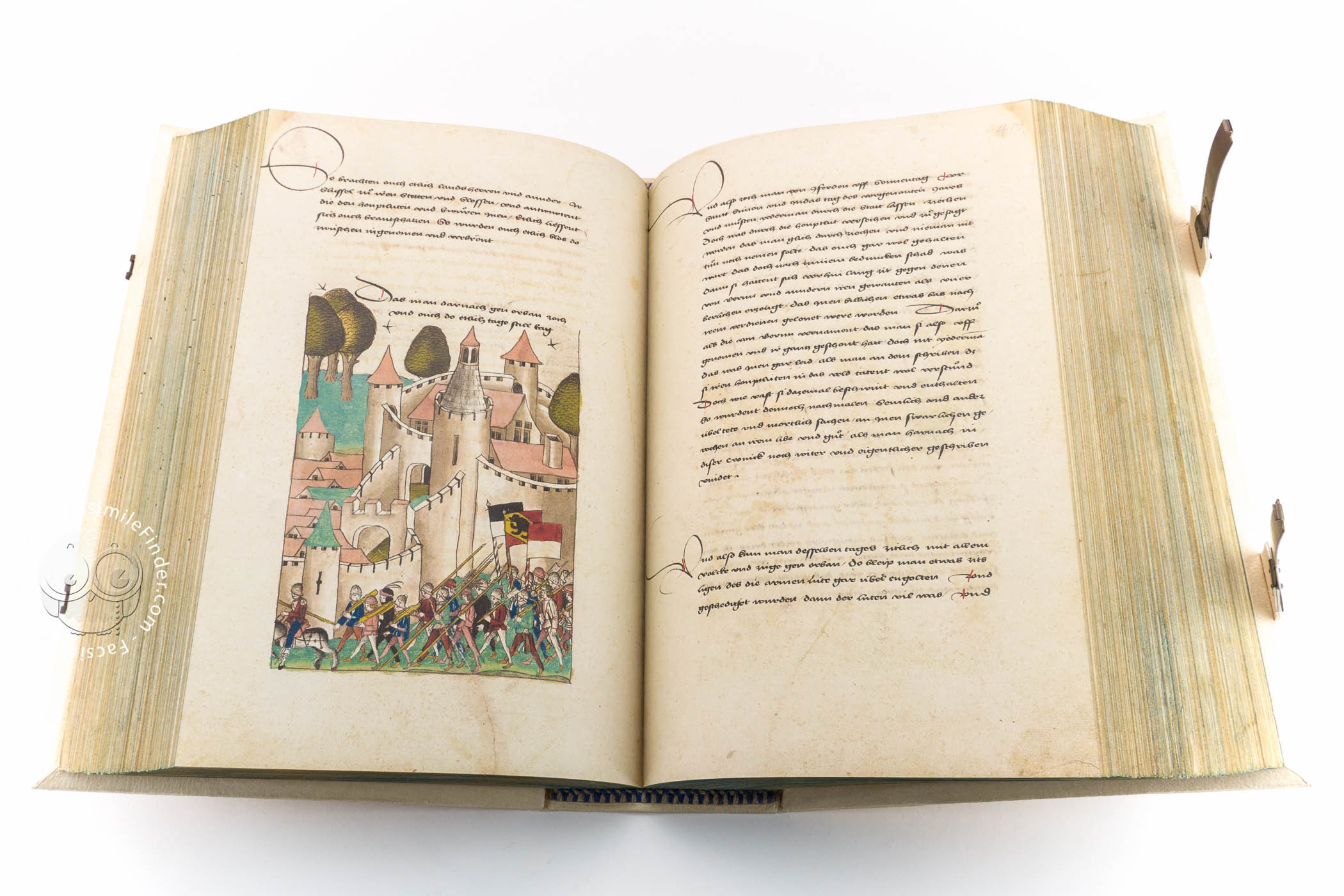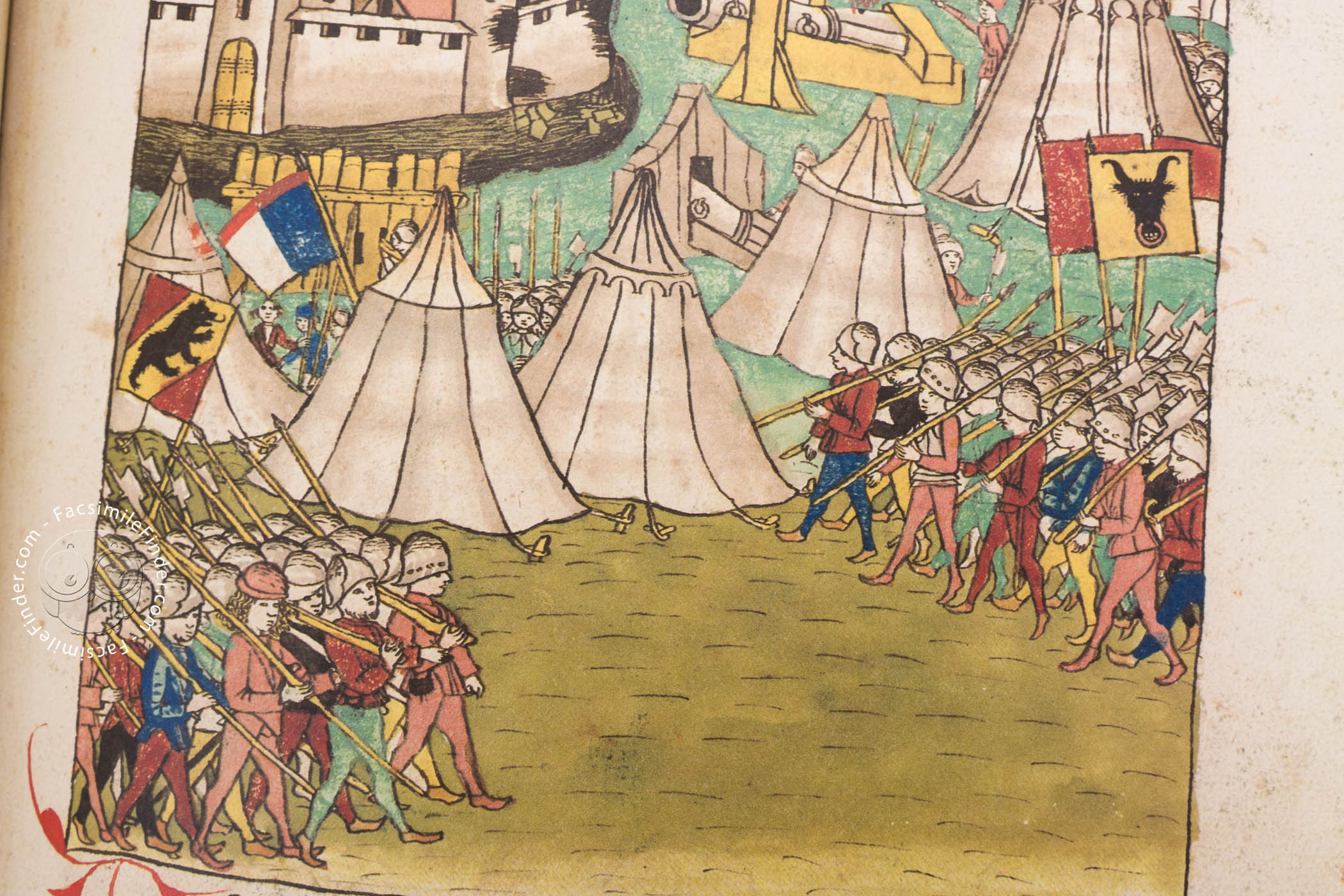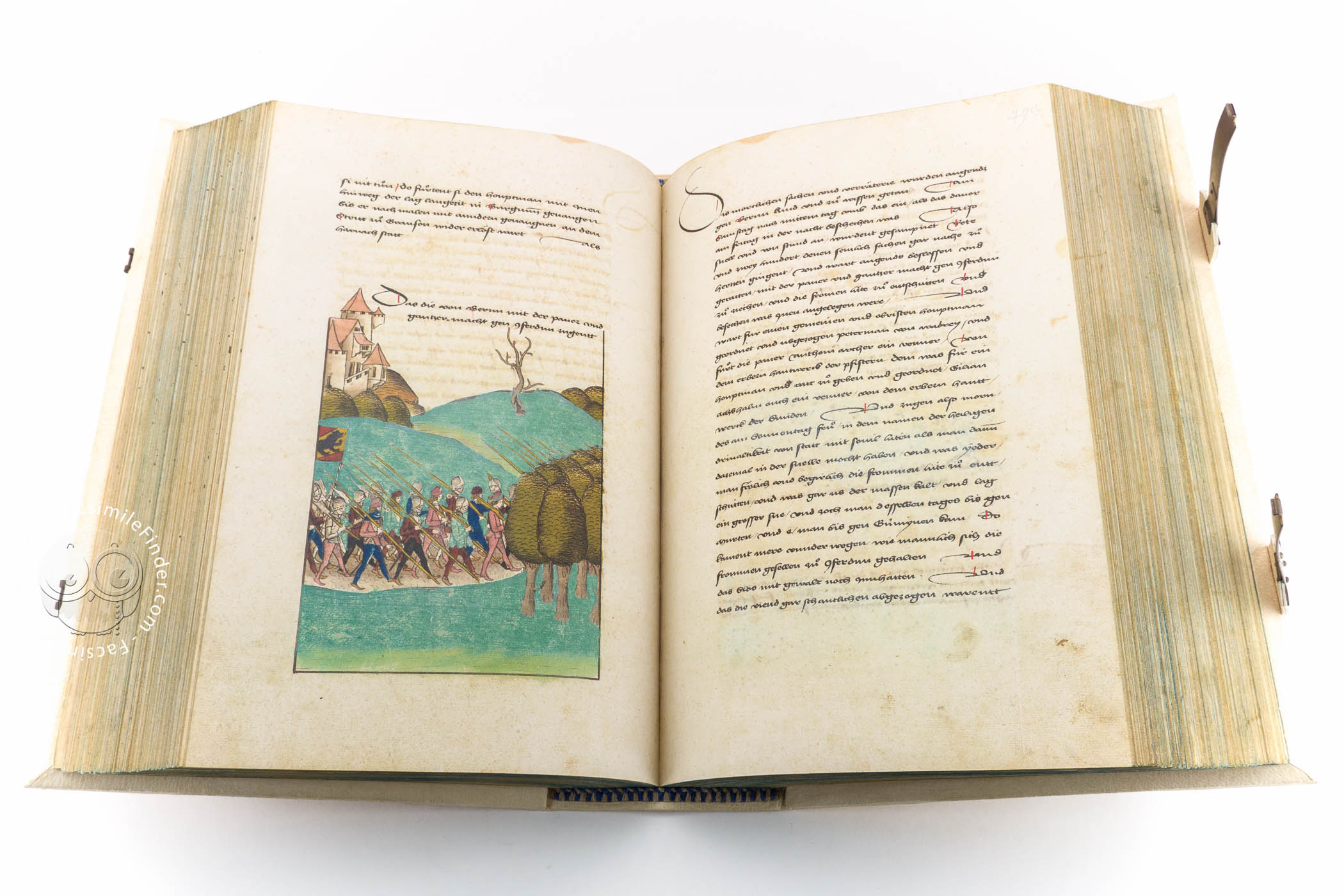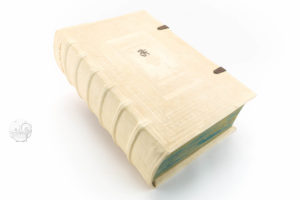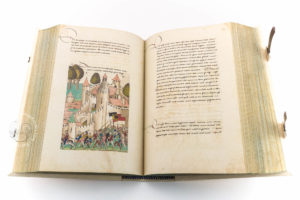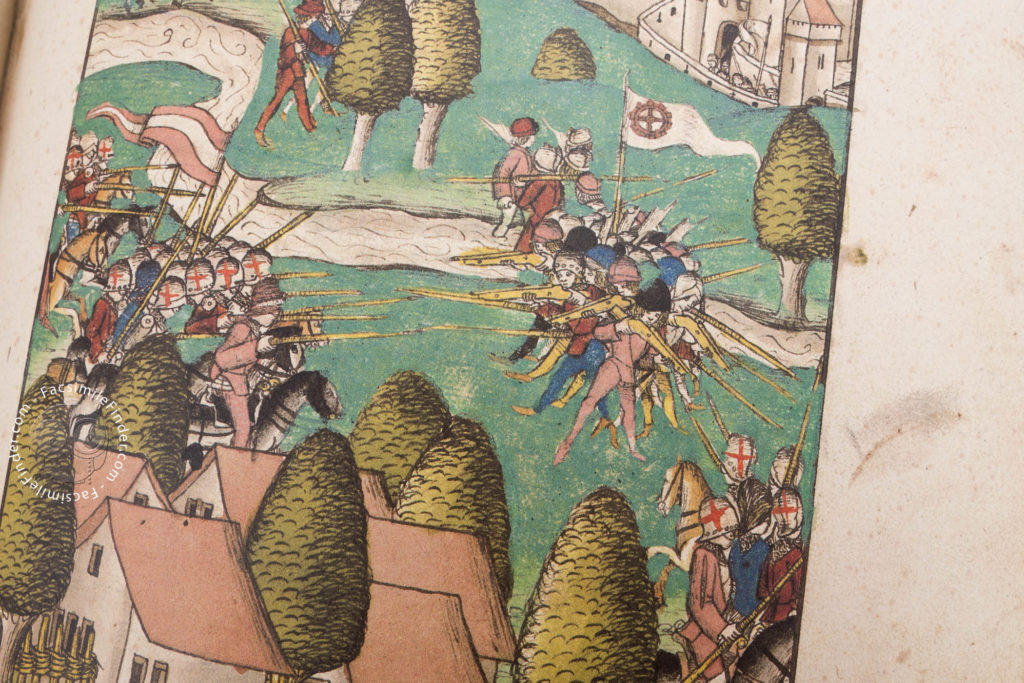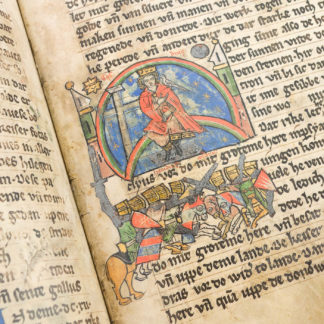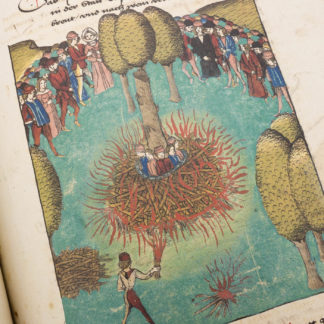Description
Facsimile limited edition of the Great Burgundian Chronicle by Diebold Schilling of Bern by Faksimile Verlag (1981) featuring:
- Edition details: Große Burgunderchronik des Diebold Schilling von Bern – Lucerne: Faksimile Verlag, 1981
- Commentary: German and French by Ladner Pascal, Pfaff Carl, Sablonier Roger, Schneider Hugo and Wyss, Robert
- Binding: the leather binding corresponds exactly to the original and is decorated with embossings and clasps
About the original manuscript: Zentralbibliothek Zürich, Hs. Ms. A5
The Great Burgundian Chronicle, also called the Zürcher Schilling after the city where it is kept, is the most original and comprehensive reference book on the Burgundian Wars. It was executed around 1480 in the tradition of the Bern chronicles begun by Konrad Justinger in 1420 and carried on by Bendicht Tschachtlan around 1470.
Diebold Schilling the Elder is both the author and writer of this fascinating work. The Great Burgundian Chronicle with its 199 lavish illustrations represents an impressive testimony to the history of Bern and the Swiss Confederation.
The Great Burgundian Chronicle
In 1474 Schilling was commissioned by the Council of Bern to write a chronicle of the city, from its beginnings to contemporary times. Considering the greatness and importance of his home city, Schilling understood this task in creating a work of major significance.
Between 1474 and 1483, he created a monumental work, the Official Chronicle of Bern in three volumes. The original version of the third part, our Great Burgundian Chronicle, never left Schilling’s possession. It is the most comprehensive of all chronicles ever carried out by Schilling.
The Great Burgundian Chronicle gives a unique witness; here we see very clearly the genuine understanding of a patriot. The official edition of the third volume was censored in several places.
The Text – A Monument to History
The 429 chapters of the Great Burgundian Chronicle do not deal with history in the present meaning of the word. Schilling puts little emphasis on background information, but rather describes historical events.
In each of his chapters, something important is going on: war, plundering, sieges, robbery and manslaughter, trials and violence. All these events are not only vividly described but also made visible in colourful illustrations.
Schilling’s beautiful and regular hand writing, a Gothic Cursive Script with sweeping initials, is accompanied by 199 of his own pen drawings which were washed in water-color by another artist.
The Pictorial Decoration: Luxury of the Middle Ages
One of the most important features of these illustrations is without any doubt the landscape in which the events take place. However, it hardly ever corresponds to topographic reality but is rather based on the artist’s imagination.
The viewer sees the depicted scenes from above, little towns, villages and castles, all carefully inserted into a lovely landscape of beautifully rolling hills. The narrative manner in which the artist represents the entire history of the Burgundian Wars, is particularly charming.
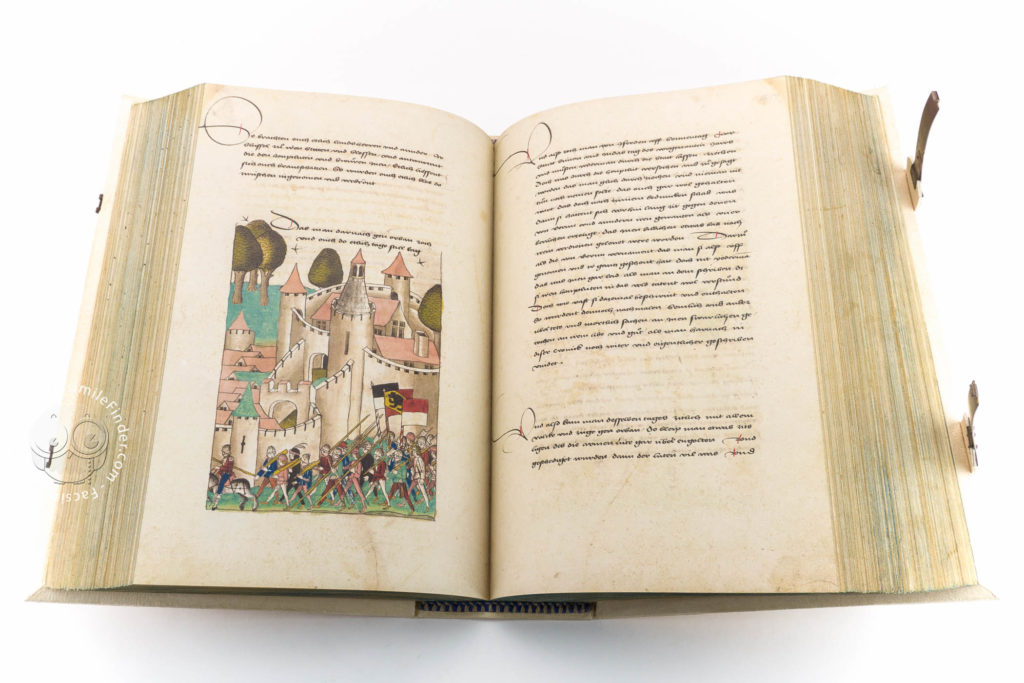
Contact us for further information!
